
GPS-guided rocket recovery systems are an innovative approach to retrieving rockets or parts of rockets after they have been launched. This technology plays a critical role in making space exploration and satellite deployment more sustainable and cost-effective by allowing for the reuse of rocket components. Here’s an overview of how these systems work and their significance:
Technology Overview
-
GPS Technology: The core of these recovery systems is the Global Positioning System (GPS), which provides accurate location data for the rocket or its parts throughout their flight and descent. By integrating GPS receivers into rocket components, engineers can accurately track their position in real time.
-
Guidance, Navigation, and Control (GNC): These systems combine GPS data with onboard guidance, navigation, and control systems to adjust the trajectory of the returning rocket parts. This can involve using small thrusters, aerodynamic surfaces, or parachutes to control descent and landing.
-
Recovery Operations: The final phase involves retrieving the rocket or its components once they have landed. Depending on the mission profile and recovery strategy, this can be on land or at sea. The precise GPS tracking enables recovery teams to locate the hardware quickly and efficiently.
Applications and Benefits
-
Reusable Rockets: Companies like SpaceX and Blue Origin have pioneered the use of GPS-guided recovery systems in their efforts to make rockets reusable. By recovering the first stages of their rockets, they can significantly reduce the cost of access to space.
-
Precision Landing: GPS guidance allows for the precision landing of rocket components, which is crucial for landing on specific recovery platforms, such as drone ships in the ocean or back at the launch site.
-
Safety: GPS-guided systems enhance the safety of recovery operations by providing accurate tracking data that can be used to avoid populated areas and manage airspace around the descent path.
Challenges
While GPS-guided rocket recovery systems have proven successful, they also face challenges such as:
-
Weather Conditions: Adverse weather can affect rocket components' descent and recovery operations, making it more difficult to predict landing zones accurately.
-
Technical Failures: The complexity of integrating GPS, GNC, and recovery hardware means there is a risk of technical failures, jeopardising recovery efforts.
-
Regulatory and Environmental Concerns: Recovering rockets, especially in international waters or sensitive environmental zones, involves navigating complex regulatory and environmental considerations.
QRS LOCAL EFFORTS
In 2010, several former forum members started discussing the concept of a GPS-guided recovery system to steer rockets back towards their point of origin (the launch pad).
While some basic concepts were addressed, several insurmountable issues remained.
At that time, one of the forum members even provided a pattern for a steerable para-wing chute known as a NASAWING.
Pattern for NASAWING as provided by Mike Nichols of ASRI
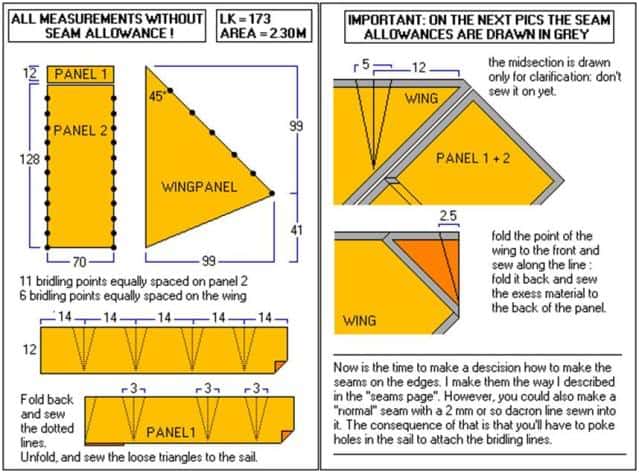
Return to the Launch Pad Video
More Technical Presentation
So all of that was back in 2010, and the Apogee Rocketry project was way back in 2017-2018. I have heard nothing of this project since that time. I wondered what became of this project since that time.
Perhaps it vanished with COVID-19, or the rocket community is too small to support the development required for such a project. Although looked at Tim's video clips and presentation above, it appeared that the concept was fairly well advanced, and they were at the stage of sourcing materials.
UPDATES ???
If anyone has any further information regarding the outcome or progress of the Apogee project, I would be interested.
However, if anyone would like to discuss and explore this topic further, I believe anything that could help avoid the cornfield or the powerline would be of value.

The dreaded Cornfield
UPDATE FROM APOGEE ROCKETS
After viewing Tim and the crew's above videos, I decided to contact the Apogee crew and discover what had happened to their 2018 project.
I received the following response almost immediately.
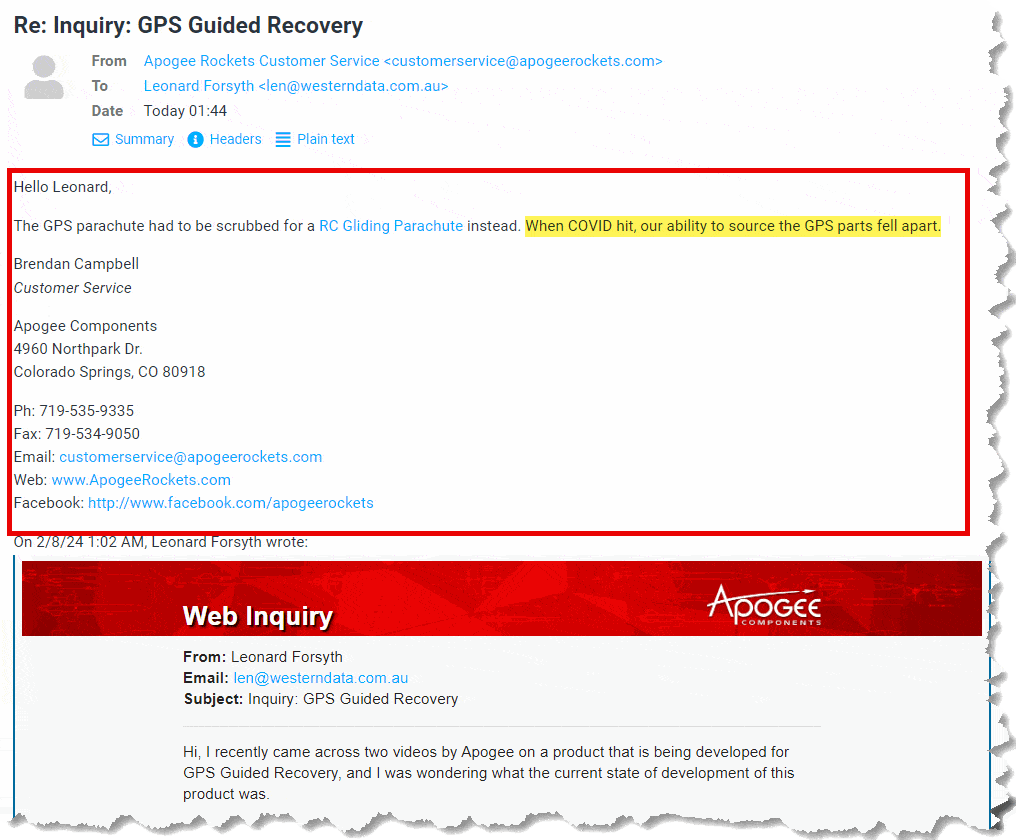
So the big 3 questions are now:
- What is the RC Gliding Parachute?
- If this is market-ready, how much does it cost?
- And most importantly - does it work as advertised?
So, to answer the first question, we will let Tim answer the first question in the following video.
Q1. What is the RC Gliding Parachute?
Q2. How much does it cost?
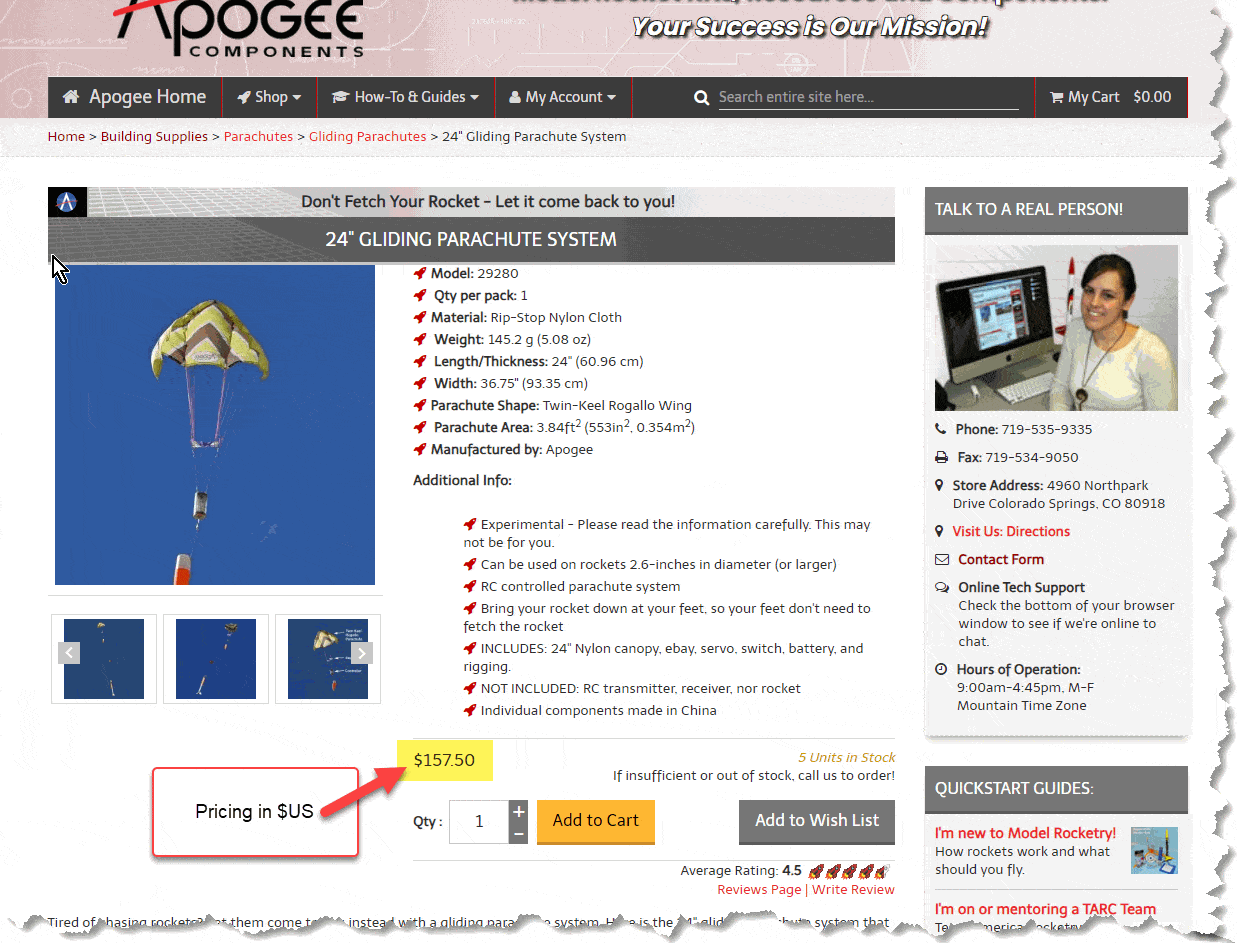
To calculate the total cost of your purchase, let's see what your shopping cart will look like.
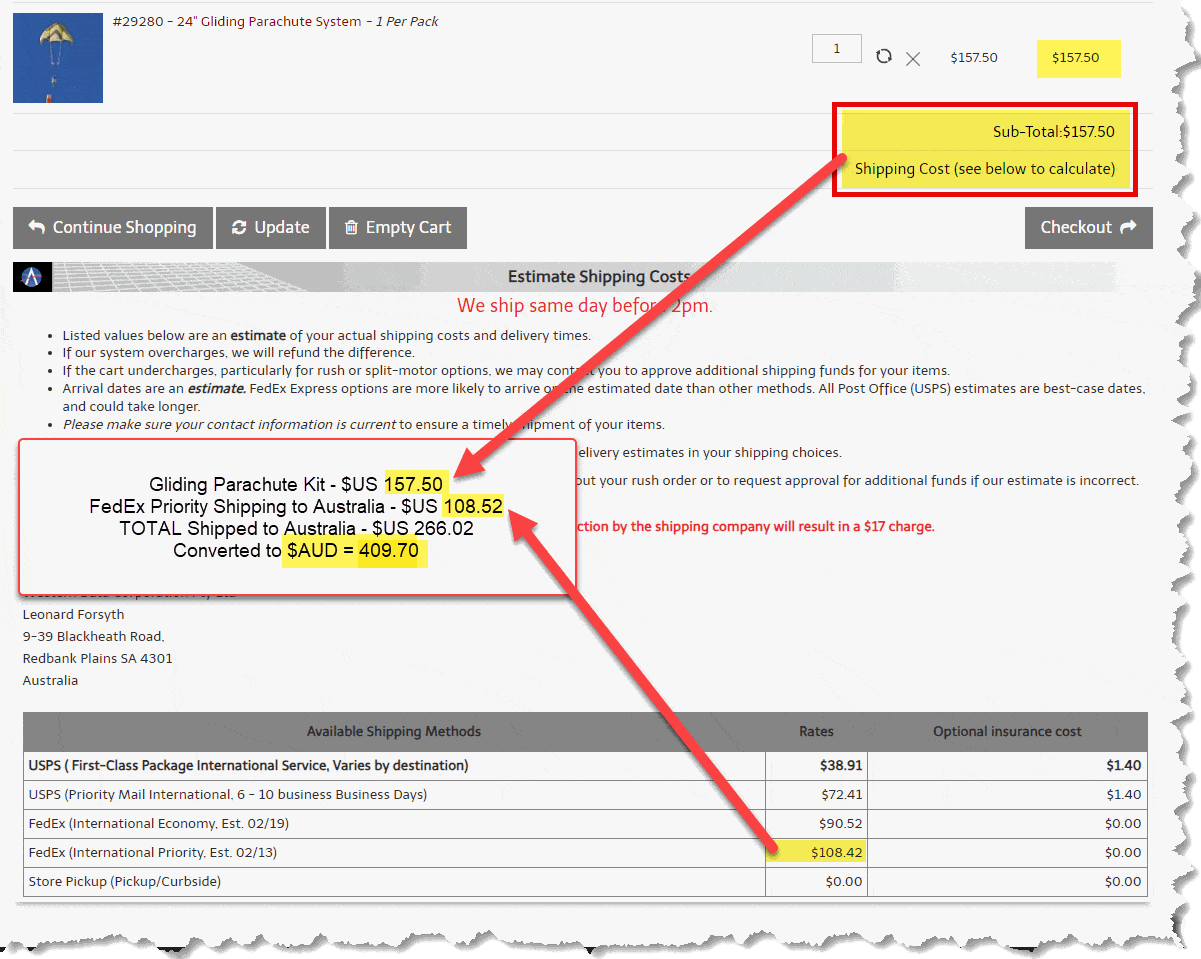
While I am not trying to frighten anyone, the investment to get this recovery system to your doorstep in Australia will be approximately $409.70, based on today's exchange rate.
You will also still need some additional items, which will cost this recovery kit well north of $500.
See the attached Product PDF for the other items required for this experimental recovery kit.
CLICK HERE TO DOWNLOAD - APOGEE PRODUCT PDF INSTRUCTIONS
The above PDF file will open in a new tab - Please Print and Read
Q3. DOES IT WORK
I will admit to really appreciating TVM's work in Rocketry Space. However, I think they may have bailed too early on the GPS solution they originally proposed.
The biggest criticism of this system on other Rocketry Forums was its cost. However, I can only wonder what the final cost of a "GPS-based" system as compared to the "Expert" system.
(I love the way they have tied the Terms "Experimental" and "Expert" based systems into one product. It almost absolves them of ALL responsibility for product warranty.)
It seems too early to say how reliable the Gliding Parachute system is. The current offering is far from the original design system, and it will require you to add your own RC components, so it will rely NOT on a GPS Mode but instead on the Manual Expert mode. In other words, how skilled YOU are at flying an RC Aerolplane type device and the reliability of the equipment.
Now that COVID bourne supply chain issues are fading from memory I can only wonder if Apogee will ever revisit the development of this product or has that moment passed?
We all know that the rocketry community globally is very small and very niche - perhaps it is just not viable for the ROI to complete the development of such a product.
LOCAL LAUNCH CONDITIONS
Remember that when flying at Cedar Grove, your RC equipment may have to contend with the additional stresses of launch and electrical interference from overhead power lines. -
But hey - it's a rocket launch - what could go wrong? 😀 😀 🤣
I suspected that the GPS recovery system had been abandoned...
The replacement Gliding Parachute system does indeed work:
Regular launcher Greg T has launched this a few times at Jimboomba. From memory it needed some tweaking to work perfectly...
QRS President
Tripoli #13468 L3
Tripoli Prefect #131
Tripoli TAP Member
I know Apogee states that they had GPS supply issues during Covid and that was why they modified the project. I have trouble accepting that, especially now as those issues are no longer really issues.
But if I read the ITAR legislation correctly it seems pretty clear cut that they were not ITAR compliant. This actually makes sense to me, as having a COTS solution to 'deliver' a payload to a fixed set of GPS coordinates autonomously would be a game changer for certain organisations.
to 'deliver' a payload to a fixed set of GPS coordinates autonomously would be a game changer for certain organisations.
Do you mean terrorist organisations ??? 😀 😉 😀
On a serious note
I get all sorts of electronics out of China almost weekly, and I can't see that if there was any substance to the pandemic argument, I would have thought that this would have long passed some four years later.
I may have to message TVM and ask if they will revisit the project anytime.
Having just said the above, I can understand that the rocketry community is such a small community that, as far as ROI for a developer goes, "the juice may not be worth the squeeze".
Ultimately, it may be up to our own recognisance to advance this project.
Drew, I know one of your West Australian Rocketeers (Paul Kelly) worked in this field under his " Wooshtronics " brand from 2010 to 2011.
Do we still have any existing clever coders in the rocketry community?
The last time this subject was seriously visited, we were still coding in PIC.
I wonder if an Arduino Nano would be able to manage a control sequence to steer a servo-driven chute back so that it could achieve a return to the "point of origin". I also wonder if TVM issue was more so an issue of getting GPS modules that had a fat enough NEMA acquisition rate at an appropriate price point.
I know the USAF has been using this technology for several years in their Joint precision aerial delivery systems (JPADS) to drop pallets of supplies out of the back doors of high-altitude cargo planes, - but who has their budget (perhaps not Apogee Rocketry)
https://defense-update.com/20070301_aerialdelivery3-gps.html
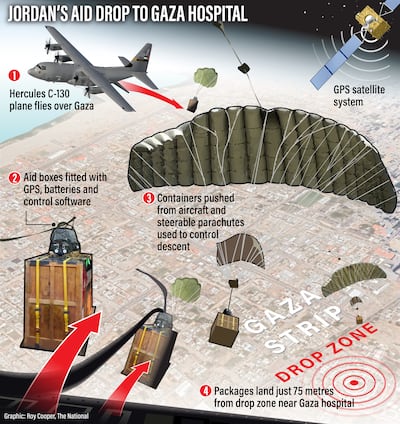
Len Forsyth
(A problem well defined is a problem partly solved - Mike Kaiser)
@lenforsyth pretty much. There's a video on Apogee's youtube channel from 2019 that shows they had it going in prototype. Looked quite impressive.
As for PK, he's still here but doesn't do retail rocket work anymore. Craig is also still quite heavily involved in designing and building rocket related electronics. I suspect you've met him?
When you next catch up with PK & Struddie, please say hello to them for me.
@lenforsyth PK; sure. But being honest Strud is probably closer to you now than he is to us. He's in western NSW now.
Grapevines are notoriously unreliable - (you really can't believe anything you hear on them), as the last I heard (over 10 years ago), he had or was considering moving from either western Sydney or maybe it was the Hunter region to WA. Perhaps that just never happened.
However, I do recall having a great trade night before a launch at Williams in 2011 at PK's work premises east of Perth.
@lenforsyth lol, that DID happen, and he was over here for a number of years. But he's now back over east.
Perhaps as the old saying goes - "You can take the boy out of Sydney - but can you ever really take the Sydney out of the boy"
